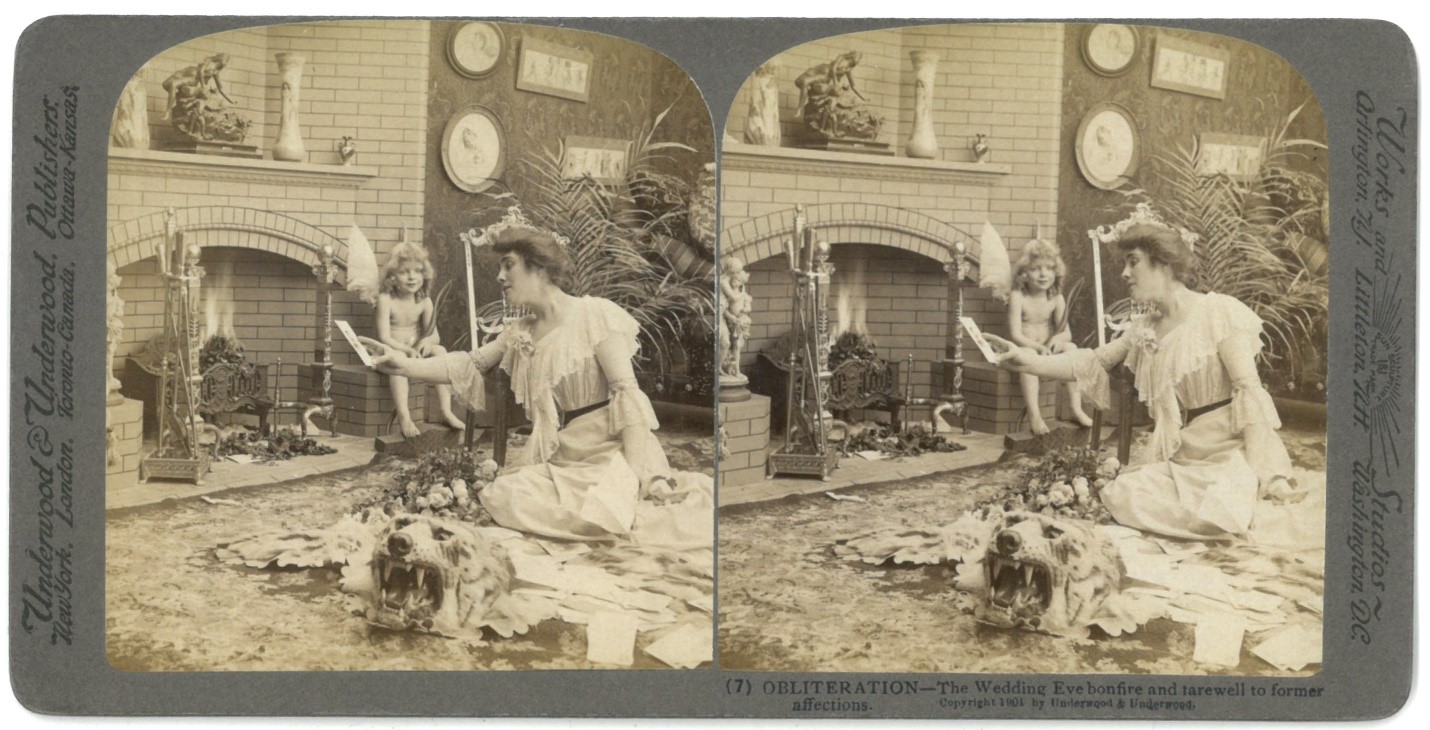This post is written by Kelvin Ramsey, '79.
Valentine-related stereoviews are rare. There are, however, many series of views that depict love, courtship, and marriage. The image below is card seven in what was probably a 12 card set. It depicts a well-dressed woman on the eve of her wedding. She is sitting with a pile of letters beside her, presumably letters from her lovers who are not her husband-to-be. The image is full of symbolism of love: cupid sits on the hearth with a somewhat bemused look; flowers (a symbol of fertility) rest beside the woman; the fireplace with the flame of fire (a symbol of passion) is receiving the love letters. The woman is reading and savoring each letter (based on her expression) before she commits it to the fire. There is a statue of lovers on the left side of the fireplace and another that may be Venus and Cupid above the fireplace.
 Underwood (7) OBLITERATION- The Wedding Eve bonfire and farewell to former affections (1901)
Underwood (7) OBLITERATION- The Wedding Eve bonfire and farewell to former affections (1901)
Then there is the tiger skin. There appears to be an association between a tiger skin rug and love out of wedlock during this late Victorian period. It becomes a cultural icon in 1906 with the publication of a novel, Three Weeks by Elinor Glyn. The novel is a story of three weeks of passion between a queen on vacation and a younger Englishman. For its time, it was quite scandalous with a love scene on, you guessed it, a tiger skin rug. As with such books today, copies flew off the shelves and Glyn became a version of a celebrity. She hobnobbed with the rich and famous and even spent a couple of hours visiting with Mark Twain. She used excerpts of their conversation to sell more books (much to the chagrin of Twain, who did not have a high opinion of her writing). Glyn moved to Hollywood and became a screenwriter. A silent movie version of Three Weeks came out in 1914. Glyn also created the “It Girl” persona for the actress Clara Bow.
 Cell from Walt Disney cartoon Shindig (1930) (https://disney.fandom.com/wiki/The_Shindig)
Cell from Walt Disney cartoon Shindig (1930) (https://disney.fandom.com/wiki/The_Shindig)The tiger skin trope continued in popular culture, even in Walt Disney cartoons. In the Mickey Mouse cartoon "Shindig" (1930) the cow, Clarabelle, is reading from Three Weeks and has no clothes on. The cartoon was banned in Ohio for being too suggestive.
I leave you with the anonymous doggerel:
Would you like to sin
With Elinor Glyn
Or would you prefer
To err
With her
On some other fur.